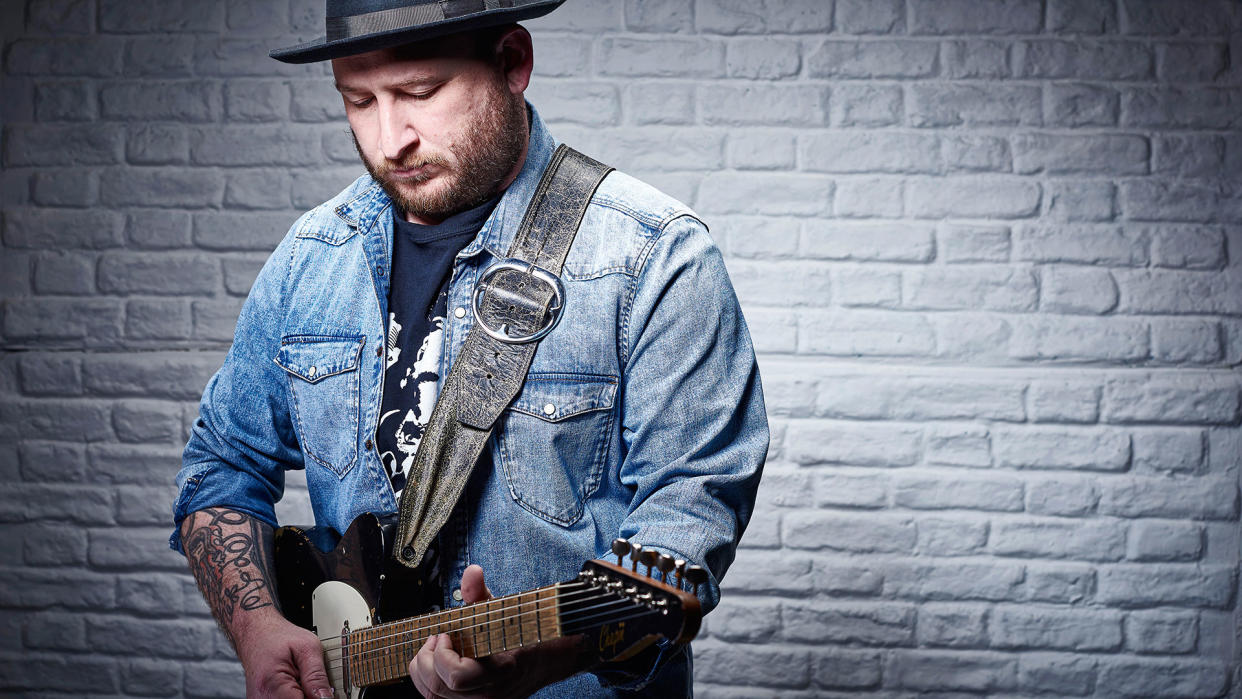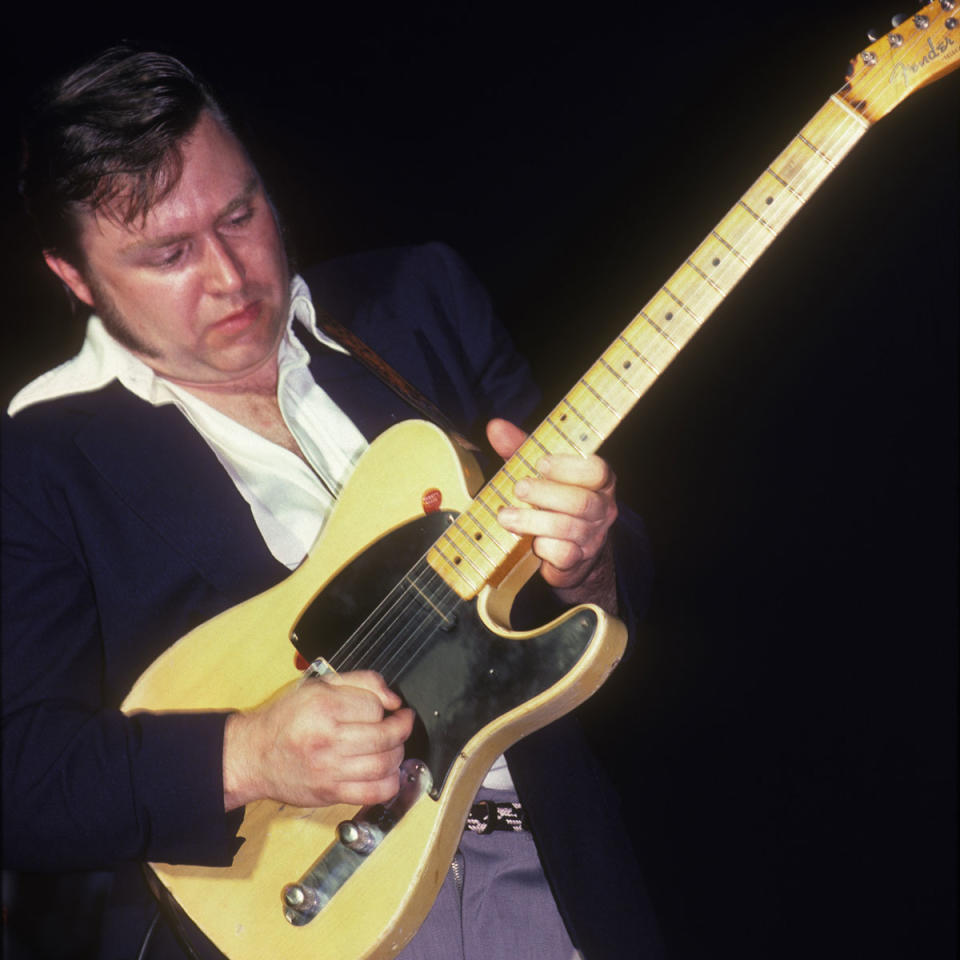“When I listened to Danny Gatton’s mind-boggling licks, I realized that they depended on a different technique. It just wasn’t possible to flatpick most of them”: Josh Smith presents a crash course in hybrid picking and fast-paced jump blues soloing

- Oops!Something went wrong.Please try again later.
Jump blues is a style that dates back to the 1940s and was the precursor to R&B and rock and roll. It originated in the big bands of artists like Cab Calloway and Lionel Hampton, and is always played up-tempo.
When musicians took the style outside of the big band context to pioneer its use in smaller combos, it helped lay the foundations of R&B, and was the bridge between the old and the new.
Jump blues was an important part of the swing revival of the 1990s and has an ongoing place as part of the popularity of rockabilly and blues. In this lesson, we’re going to look at some of the language I’ve developed around this style.
Jump blues has a double-time feel and the drummer will often play a fast ‘freight train’ style rhythm on the snare
Jump blues has a double-time feel and the drummer will often play a fast ‘freight train’ style rhythm on the snare. For this reason, the 12-bar blues sequence has been notated as a 24-bar structure in the examples that follow. When the tempo is this fast, and there are a lot of notes, it’s significantly easier to read it this way.
To play this style of blues efficiently, personally I prefer to use hybrid picking technique. So, before we look at the licks, let me briefly explain my approach.
For years, I played with the pick gripped between my thumb and first finger, with the rest of my fingers anchored to the body of the guitar for stability. That was until someone gave me a tape of Danny Gatton’s music. Danny’s modern country playing approach became extremely influential and important to my development.

When I listened to Danny’s mind-boggling licks, I realized that they depended on a different picking technique. It just wasn’t possible to flatpick most of them.
One of the first things I tried to learn was his version of Ray Charles’ What’d I Say, which he plays at warp speed. It sounded terrible flatpicked, so I switched to hybrid and began to develop playing with that technique.
Everyone hybrid picks slightly differently, in a way that feels comfortable to them
As with most technique-driven concepts, everyone hybrid picks slightly differently, in a way that feels comfortable to them. There’s no single right way to do it, only what works for you and sounds good.
I grip the pick with my thumb and first finger and use my second and third fingers for plucking strings. The fourth finger is rarely, if ever, used. When I started to teach myself this style, I quickly noticed that my second finger naturally began to replace pick upstrokes.
I analyzed what I was doing, and what felt natural, and discovered that I played a lot of licks that use a pick-pick-finger pattern. By this, I mean playing two pick strokes on adjacent strings, followed by a pluck with the second finger. Here are some exercises designed around that approach.
Get the tone
Jump blues shares a close relationship with rockabilly and rock and roll, so we’re in bridge pickup territory here and, tonally, we want plenty of bite.
A single-coil with the mids and highs boosted will get you in the right ballpark. Josh adds some subtle drive to his tone, but actual distortion is to be avoided because this style is all about clean, crisp phrasing.
Example 1: Banjo rolls
Play two downward pick strokes by pushing through adjacent strings with one motion, then pluck upward with the second finger. This approach lends itself to playing triplets, as in country banjo rolls. Try it now. Palm mute the strings with the picking hand so that the notes don’t sustain, then slowly pick this triplet pattern.
Example 2: Hybrid picked A major triads
If you’ve never hybrid picked before, this may feel a little awkward to begin with, but stick with it. The previous exercise is the kind of thing you can practice with your guitar unplugged, sitting in front of the TV, because it’s just about training the mechanical movement of your pick and fingers into muscle memory.
I spent hours doing this until the movement became automatic. Now explore moving between string sets to play these A major triads.
Example 3: Double-stop exercises
I use hybrid picking slightly differently (especially in a jump blues context) when playing double-stop licks. Here, I use the combination of a single downward pick stroke and an upward finger pluck.
I also pluck upward using the second and third fingers together for added power, to create more of a snap and achieve a more aggressive tone. Here’s a double-stop exercise for you to test out this approach.
Example 4: Country-style 6ths
It also helps to have hybrid picking technique under your fingers if you want to play passages in 6ths, country style. Try this simple line, which requires you to pick downward and pluck upward simultaneously with a pinching motion.
After a bit of practice, you’ll find it much easier to execute 6th lines hybrid-style, rather than adjusting the fretting hand position to mute the string in between the fretted notes.
Example 5: Jump blues solo
This jump blues is in the key of E major and each set of three examples combines to make a full-chorus solo. In this first lick, although we are in E major, we treat the E as a V chord and use E Mixolydian (E-F#-G#-A-B-C#-D) to create the melodic line. Try hybrid picking this line to achieve the same tone as the audio recording.
Example 6: Adapting a theme
In the next example, I reuse the simple phrase that began the previous example but adapt it for the A chord. I’m using the idea of ‘whatever you play first, that’s your theme’.
It’s a great way of being spontaneous, but it’s also focused, as we have to apply some thought to keep the theme going and be creative with it.
Example 7: Ringing notes and open strings
Use a combination of pick and fingers to play this entire line as the notes will ring into each other in a pleasing way. This works especially well for the lick that begins on beat 4 of bar 5. It’s an E Mixolydian line that uses hammer-ons and open strings. It ends by anticipating the B7 chord, ahead of bar 8.
Example 8: Hybrid-picked country lick
The most difficult part of this lick is the country-inspired descending run in bars 5-8. It uses E Mixolydian scale again. Hybrid pick this to achieve the recorded sound and articulation, and let those open strings ring out against the fretted notes. Slow things down and work out your fingerings before attempting it at full tempo.
Example 9: Highlighting chord tones
Here an A7 harmony is introduced with a simple root and 5th chord. In bar 2, I’m playing E blues scale over the A chord. In bar 3, a double-stop outlines the A7 using the 3rd and 5th. The line transitions into E Mixolydian in bar 5 as we return to the E7 chord. I then alternate between highlighting the major and minor 3rd of E7.
Example 10: Sliding triads and a chromatic ending
This idea begins with a fast A major triad that slides up a whole step to a B major triad over the B7 chord. The chord changes have been on E7 previously, so this is a little surprise to the ears. To end this lick, bars 6-7 use a popular idea, which is to approach the 3rd and 5th of the E7 chord (bar 8) chromatically from above.

